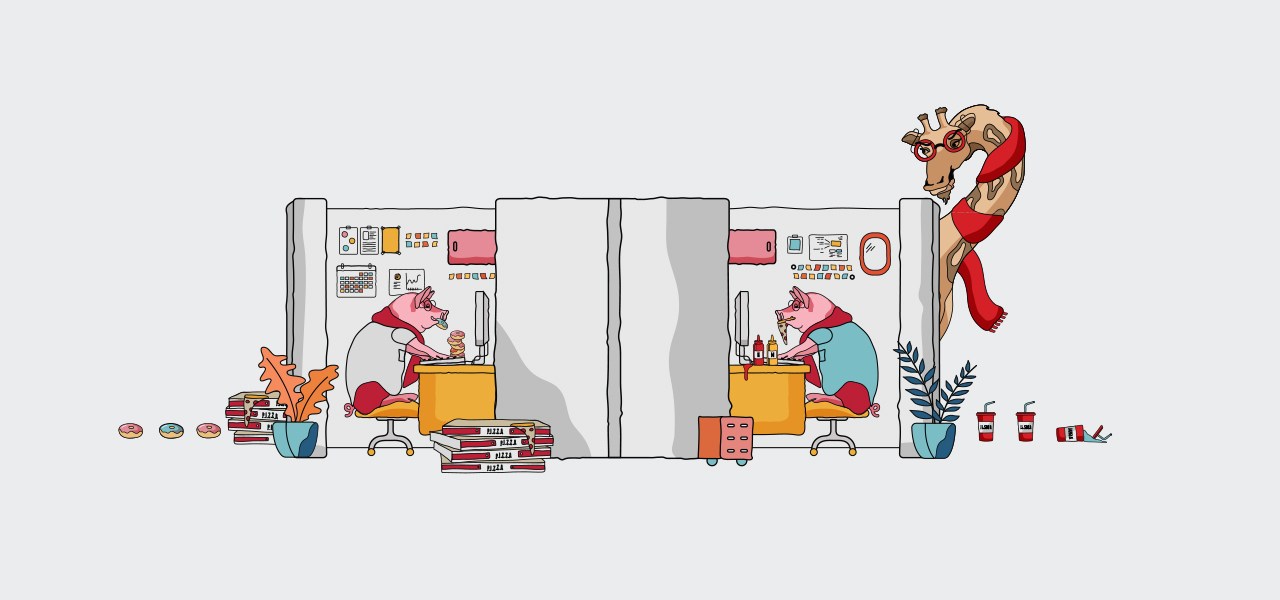Office space: The changing nature of work is changing our workspaces too

The past 20 years has seen the spaces in which work happens change drastically, particularly for companies in media, marketing and technology.
Since the early 2000s, offices have been seen by many companies as an expression of their identities. Technology companies installed slides to traverse floors and breakout spaces made from reclaimed cable cars to spur new ideas; agencies used giant art installations as desks as a way to demonstrate their creativity and ingenuity to clients, and digital media companies distanced themselves from stodgy “legacy media” with warehouse spaces and rooftop gardens.
But as the nature of work changes quicker than ever, and as cultural attitudes center more heavily around themes such as work-life balance, inclusivity, wellness and sustainability, approaches to workplace design are evolving rapidly too. Many companies are now focused less on the messages their offices send, and more on the type of practical environments they create for their employees. And of course, the continued acceleration of technological change is driving these shifts quicker than ever.
Adaptability and flexibility
As a result, experts say progressive workplace design is now focused squarely on adaptability. Companies that have the luxury of designing their own office spaces are no longer doing so for needs they have today, but are instead attempting to create spaces that are ready to adapt to technologies, job functions and business models that may not yet exist. This dynamic is particularly pronounced in the fluid industries of media and technology.
“You have to design for change. The world of work is changing, people are changing, clients are changing, our client’s clients are changing. We work hard to make architecture that’s nimble to support that. It’s also just the sustainable thing to do,” says Colin Macgadie, chief creative officer at workplace strategy, architecture and interior design consultancy BDG.
Workers themselves crave more flexibility, too. They perform best, they say, when a variety of spaces are available to them. But there’s no one-size fits all. According to Capital One’s latest annual Work Environment Survey, 85% of employees say a flexible design is important to them, and 77% of respondents said they perform better at work when they have flexible spaces available. Millennials also place more emphasis on it than older generations.
For companies, flexibility is about more than just flexible desk arrangements, breakout areas and collaboration spaces, however. Rather, it’s about creating spaces that can not only serve multiple purposes, but can be easily reconfigured. At a practical level that often means simple changes like less drywall, and more non-fixed furniture that can easily be rearranged.
The good news is this approach can also save money. Simple advances in technology such as wifi and long-life batteries mean that employees are now mobile then ever, so limiting them to desks, cubicles and “pods” is not only unnecessarily restrictive, but potentially uneconomical when teams and job functions are shifting so rapidly.
Measurement and analytics
But as in most areas of business, data and analytics are rapidly working their ways into workspace design, too. Concepts such as flexibility and adaptability are meaningless without the understanding of how spaces are being used and how they can be better optimized. And, of course, investors, boards and shareholders are increasingly calling for data to back up spending decisions.
As a result, definitions of workplace utilization are evolving, as are the methods through which they’re tracked. Sensors and other intelligent building technologies are now often used to measure how buildings and spaces are being used, and everything from movement to rises in temperature are often being tracked.
But according to Macgadie, companies are becoming more sophisticated with how they think about that data. Rather than simply looking at real estate utilisation and the number of bodies that can be safely be squeezed into a certain square footage, they’re increasingly attempting to tie use of space to more tangible business outcomes and metrics.
“It’s becoming less about efficiency and more about effectiveness. It’s not about density, it’s about whether a space performing a certain task really well. If the output from that space can be quantified and is exceedingly high then that space is really effective,” Macgadie says.
Wellness takes centerstage
Health and wellness is another trend that’s rapidly working its way into the workplace. Companies are rapidly introducing perks and policies designed to keep employees happy and healthy during working hours, but that’s seeping into office design as well. Access to natural light is suddenly at a premium, for example, and companies say they’re increasingly looking to provide environments that promote movement and activity.
“The trend has rapidly moved up the agenda, and clients want to deliver a healthy environment that benefits their staff. Nobody ever designs workplaces to be bad for people’s health, but when people are selecting a job it’s increasingly something they take into consideration,” Macgadie said.
The features that employees say they’d most like to see include on-site gyms and workout areas, dedicated rest and relaxation spaces, access to outdoor areas, plants and natural light and healthy snacks, according to Capital One’s survey.
Meanwhile, companies are becoming increasingly sophisticated in their ability to tie features such as these to their overall performance. Human resource analytics programs are increasingly showing that investments in these areas might actually help them reduce costs associated with employee turnover, burnout, and disengagement.
